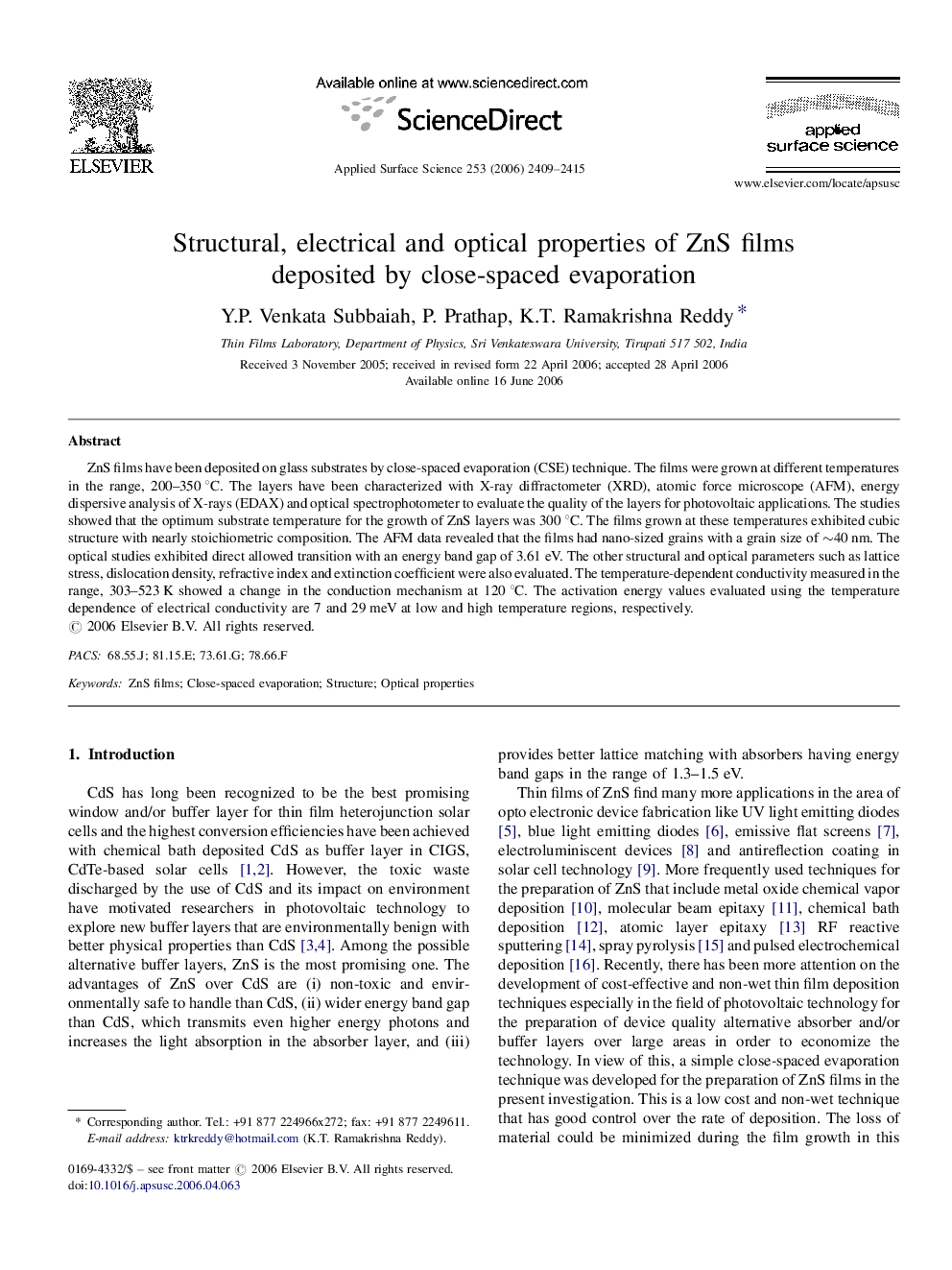| Article ID | Journal | Published Year | Pages | File Type |
|---|---|---|---|---|
| 5369905 | Applied Surface Science | 2006 | 7 Pages |
ZnS films have been deposited on glass substrates by close-spaced evaporation (CSE) technique. The films were grown at different temperatures in the range, 200-350 °C. The layers have been characterized with X-ray diffractometer (XRD), atomic force microscope (AFM), energy dispersive analysis of X-rays (EDAX) and optical spectrophotometer to evaluate the quality of the layers for photovoltaic applications. The studies showed that the optimum substrate temperature for the growth of ZnS layers was 300 °C. The films grown at these temperatures exhibited cubic structure with nearly stoichiometric composition. The AFM data revealed that the films had nano-sized grains with a grain size of â¼40 nm. The optical studies exhibited direct allowed transition with an energy band gap of 3.61 eV. The other structural and optical parameters such as lattice stress, dislocation density, refractive index and extinction coefficient were also evaluated. The temperature-dependent conductivity measured in the range, 303-523 K showed a change in the conduction mechanism at 120 °C. The activation energy values evaluated using the temperature dependence of electrical conductivity are 7 and 29 meV at low and high temperature regions, respectively.
